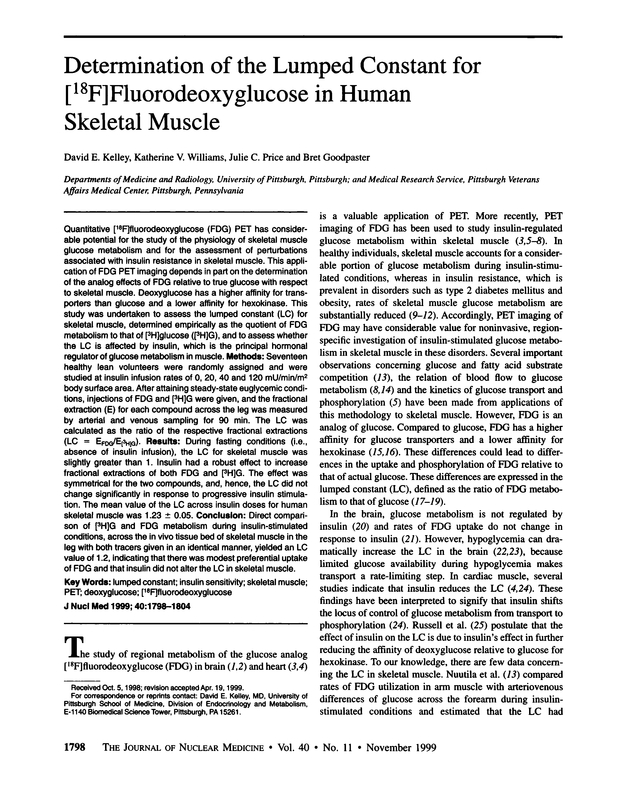Research ArticleClinical Investigation
Determination of the Lumped Constant for [18F]Fluorodeoxyglucose in Human Skeletal Muscle
David E. Kelley, Katherine V. Williams, Julie C. Price and Bret Goodpaster
Journal of Nuclear Medicine November 1999, 40 (11) 1798-1804;
David E. Kelley
Katherine V. Williams
Julie C. Price


This is a PDF-only article. The first page of the PDF of this article appears above.
In this issue
Determination of the Lumped Constant for [18F]Fluorodeoxyglucose in Human Skeletal Muscle
David E. Kelley, Katherine V. Williams, Julie C. Price, Bret Goodpaster
Journal of Nuclear Medicine Nov 1999, 40 (11) 1798-1804;
Jump to section
Related Articles
- No related articles found.
Cited By...
- Obesity Is Associated With Increased Basal and Postprandial {beta}-Cell Insulin Secretion Even in the Absence of Insulin Resistance
- Methodologic Considerations for Quantitative 18F-FDG PET/CT Studies of Hepatic Glucose Metabolism in Healthy Subjects
- Impaired Skeletal Muscle Glucose Uptake by [18F]Fluorodeoxyglucose-Positron Emission Tomography in Patients With Peripheral Artery Disease and Intermittent Claudication
- Interactions Between Delivery, Transport, and Phosphorylation of Glucose in Governing Uptake Into Human Skeletal Muscle
- 18F-FDG Assessment of Glucose Disposal and Production Rates During Fasting and Insulin Stimulation: A Validation Study
- Hexokinase II Overexpression Improves Exercise-Stimulated But Not Insulin-Stimulated Muscle Glucose Uptake in High-Fat-Fed C57BL/6J Mice
- Rosiglitazone but Not Metformin Enhances Insulin- and Exercise-Stimulated Skeletal Muscle Glucose Uptake in Patients With Newly Diagnosed Type 2 Diabetes
- Independent Association of Type 2 Diabetes and Coronary Artery Disease With Myocardial Insulin Resistance
- Interactions of Impaired Glucose Transport and Phosphorylation in Skeletal Muscle Insulin Resistance: A Dose-Response Assessment Using Positron Emission Tomography
- Resistance to Exercise-Induced Increase in Glucose Uptake During Hyperinsulinemia in Insulin-Resistant Skeletal Muscle of Patients With Type 1 Diabetes





